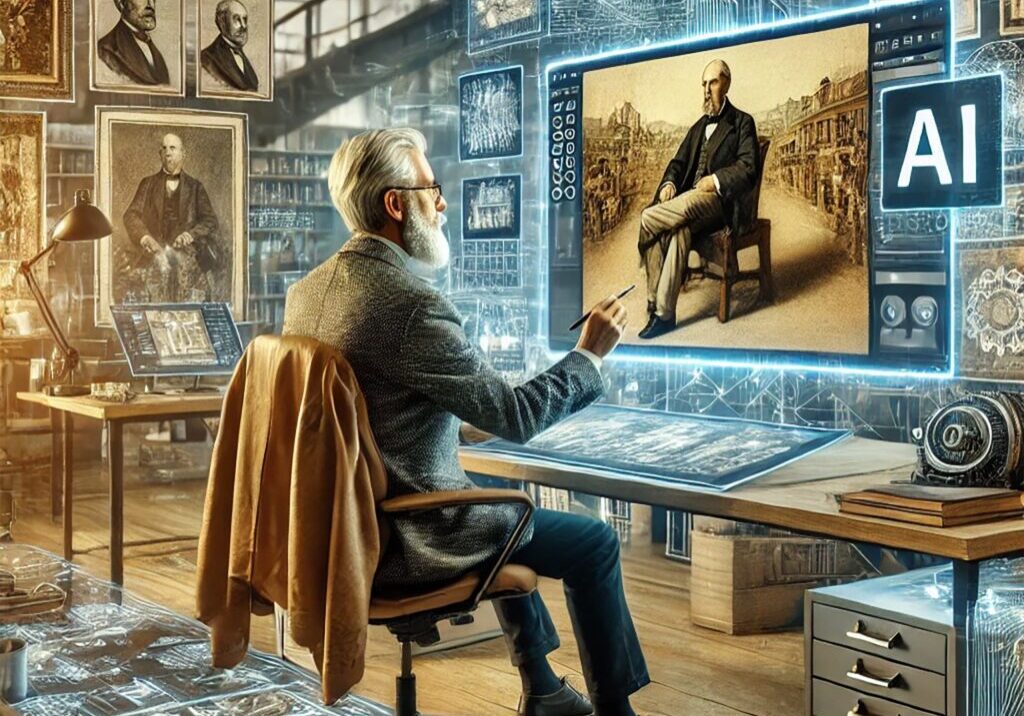
Why the Statue of Liberty Faces Forward: Framing Freedom in the Mural
Introduction
She has stood in harbors, on postage stamps, in protest signs and posters. The Statue of Liberty is one of the most recognized symbols in the world. But in the 250th Anniversary Mural, she doesn’t just stand. She centers. And unlike many depictions where she gazes outward to sea or down upon history, here she looks forward- directly into the mural’s plane. Into the future. Into the viewer. Her expression is calm, not proud. Her torch is steady. Her crown barely glints.
Around her, fireworks rise in layered arcs- not explosive, but ceremonial. Beneath her, two flags stretch- one of origin, one of inheritance. This is not Liberty as decoration. It is Liberty as declaration. Why Forward? In traditional symbolism, Lady Liberty faces the world- a beacon to newcomers, a welcome to immigrants, a lighthouse of democratic promise. But in this mural, she faces inward. Not away from the world. Into it. Forward-facing Liberty reframes her from a symbol of reception to a symbol of responsibility. She is not beckoning others toward America. She is asking America to keep pace with its own promise.
Her posture becomes not just welcoming, but watching. The Flags Beneath Her The foundation of her vignette includes two flags: To her left, the Betsy Ross flag- thirteen stars, a circle of origin. It represents the inception of freedom, the experimental moment of collective declaration. To her right, the modern fifty-star flag- an emblem of continuity and scale, of the experiment carried forward. Liberty is not positioned above these banners, but between them. She becomes the hinge point. The fulcrum. The idea that holds the arc together.
Fireworks as Frame Behind her rise fireworks- not loud, not chaotic, but layered like petals of light. Their role is not to distract, but to frame. They signal celebration, yes, but also renewal. Ephemeral and rhythmic. They rise and vanish, but they keep returning. Fireworks in this mural aren’t entertainment. They are echoes. Visual reminders that freedom must be rediscovered- again and again. Why She’s Centered, Not Elevated Liberty in this mural doesn’t dominate. She centers. She doesn’t stand on a distant pedestal. She stands among the symbolic elements- the golden wheat, the “250,” the cannons and wings, the eagle just below. She is not the conclusion of the story. She is its pulse. To center Liberty is to say: every other symbol- power, memory, heritage, sacrifice- exists only if this one endures. Liberty in Motionless Balance She holds her torch high, yes- but it’s not thrust upward. It’s steady. Held. As if illuminating not a path forward, but a moment of reflection. The statue’s forward gaze suggests continuity. She doesn’t look left toward the past, or right toward prediction. She holds the line. And in doing so, she asks the viewer to do the same. What are we carrying forward? What are we leaving behind?
Why It Still Matters Symbols evolve. They stretch across decades, political climates, moments of celebration and unrest. The Statue of Liberty has been invoked in resistance as often as it has in ritual. But here, in the mural, she is not an answer. She is a question. Not who are we, but who will we be? By placing her at the midpoint of celebration and struggle, of revolution and legacy, the mural does not just honor the republic’s founding. It challenges its future. And it does so with stillness, not noise. Lady Liberty faces forward because the work is not finished.
Further Reading / Explore More
To explore how Liberty’s placement connects to other symbols like the golden wheat, the “250” block, and the dual flags, visit the mural’s central axis or read our companion entries on Washington, the founders, and the moral field around them.
Related Blog: The Golden Statue of George Washington: The Winged Founder Mural Link: https://usa250thanniversarymural.com Tags: Statue of Liberty, 250 Mural, Public Art, National Symbols, Revolutionary Legacy, American Freedom, Civic Identity, American Flags, Mural Design, Liberty Symbolism

